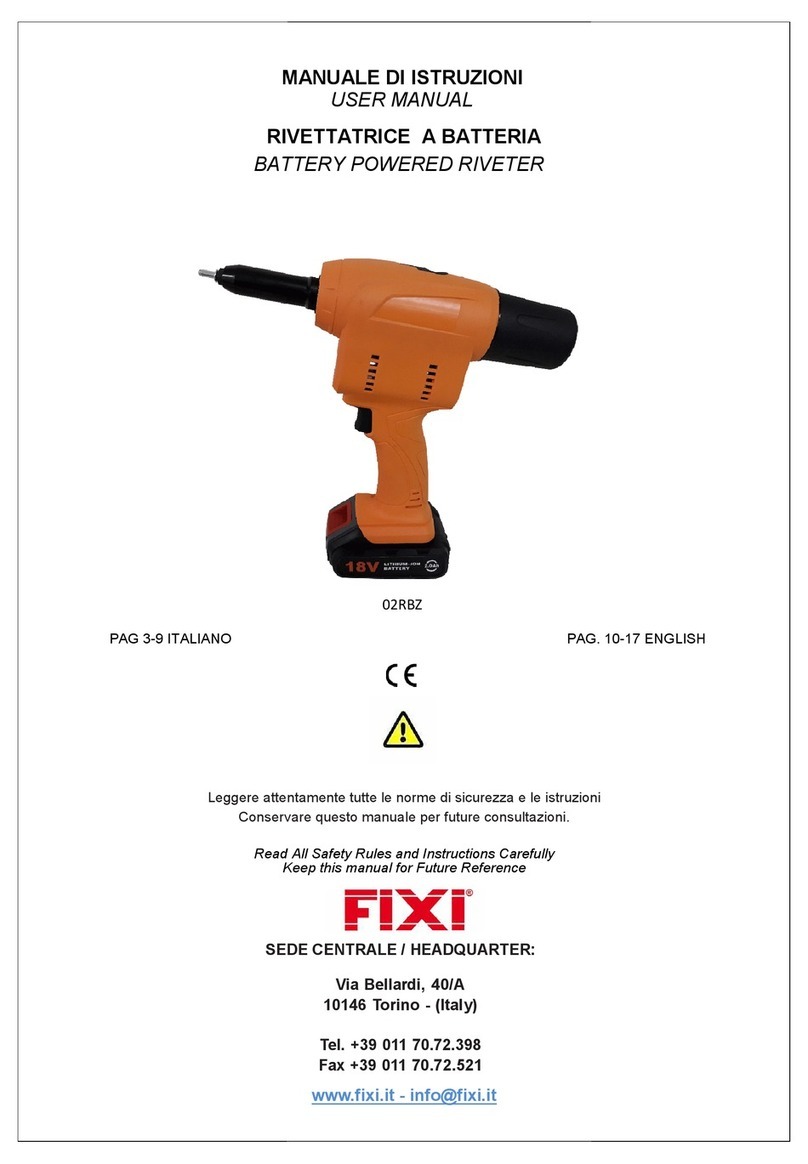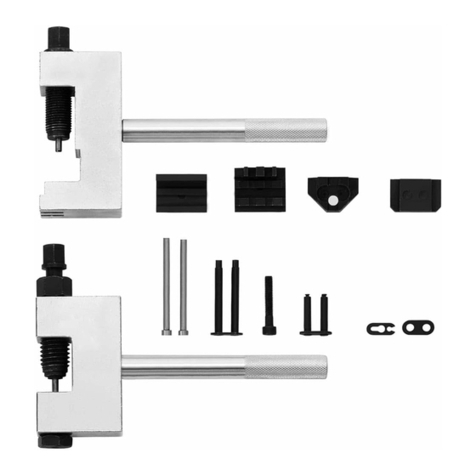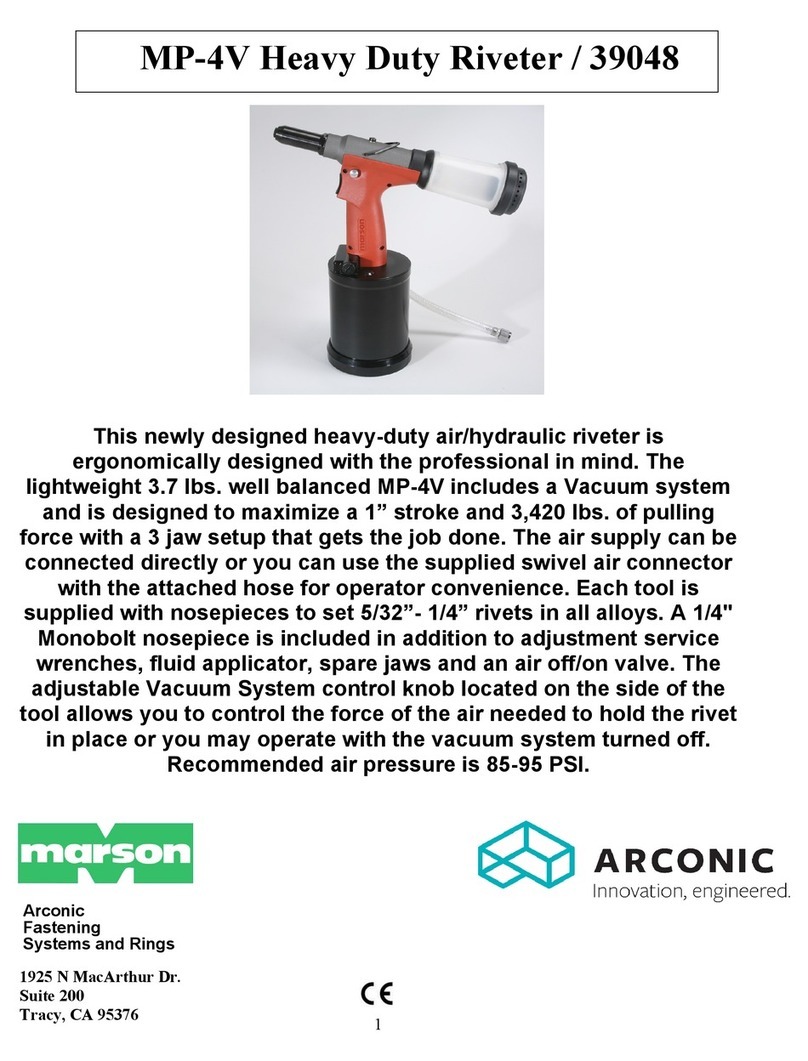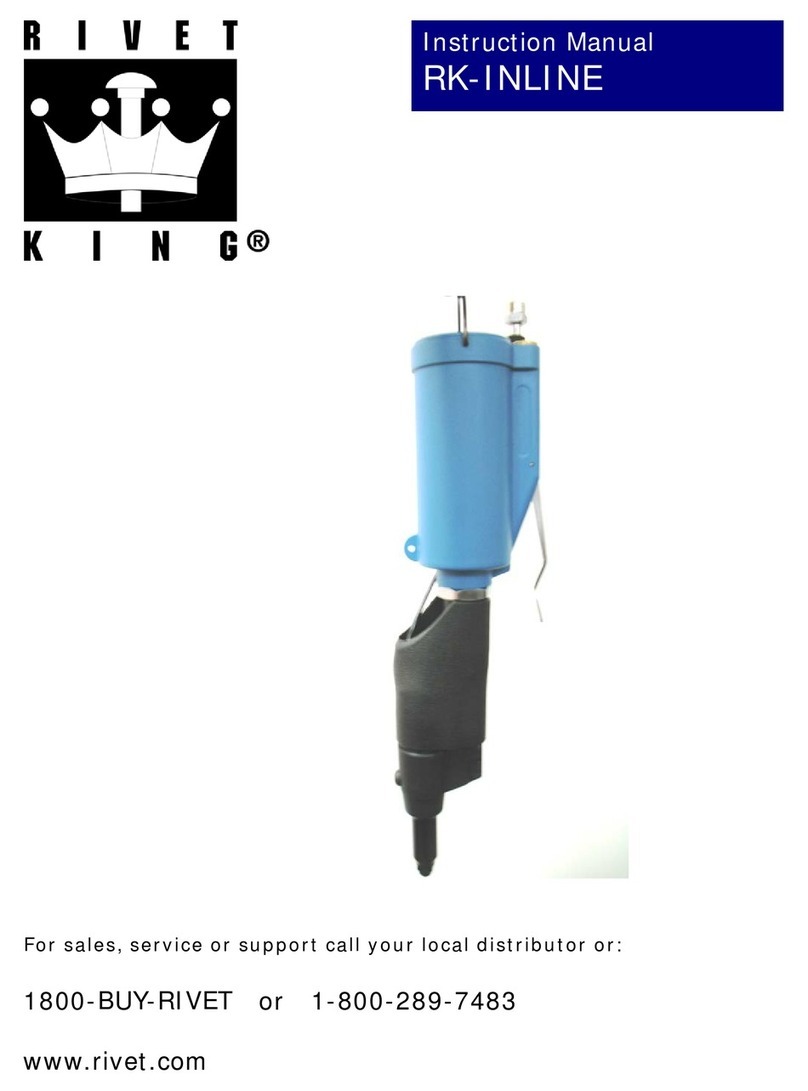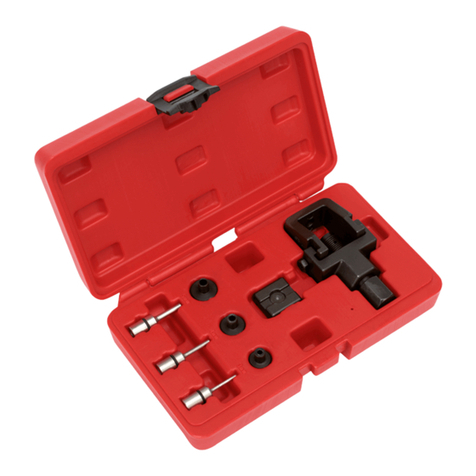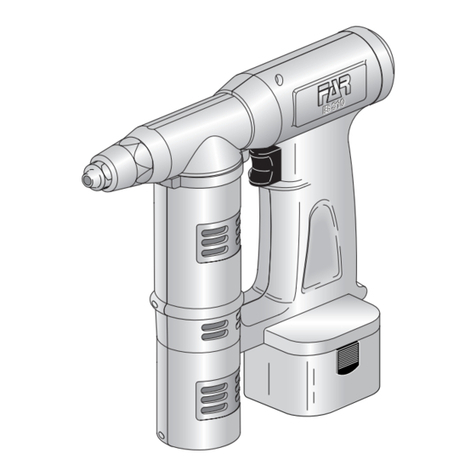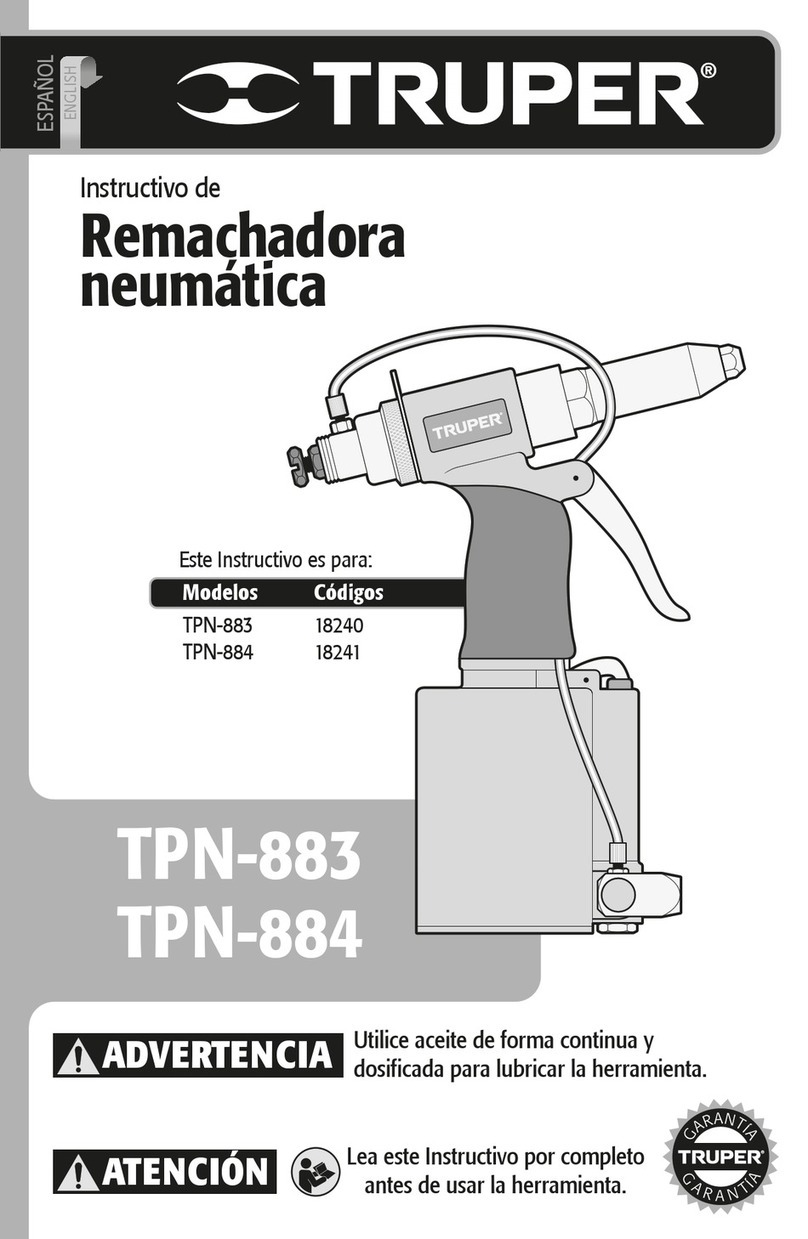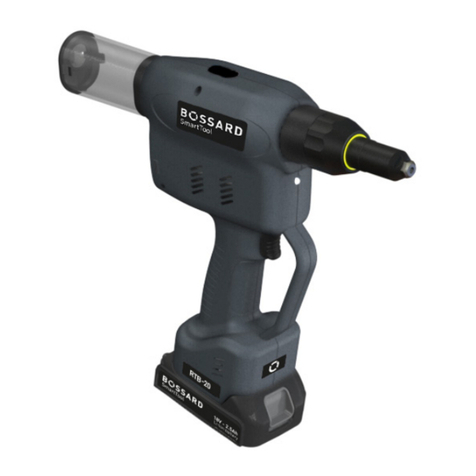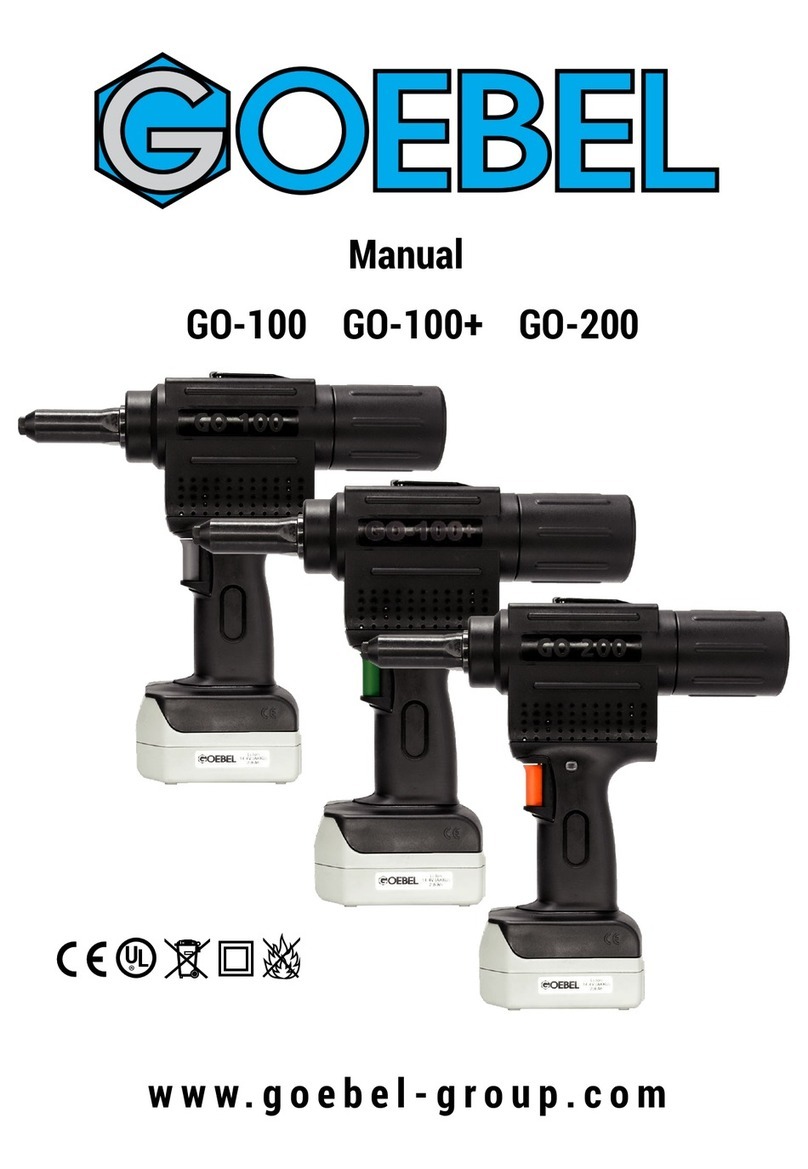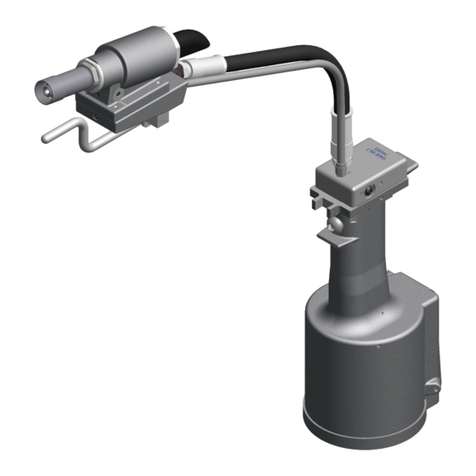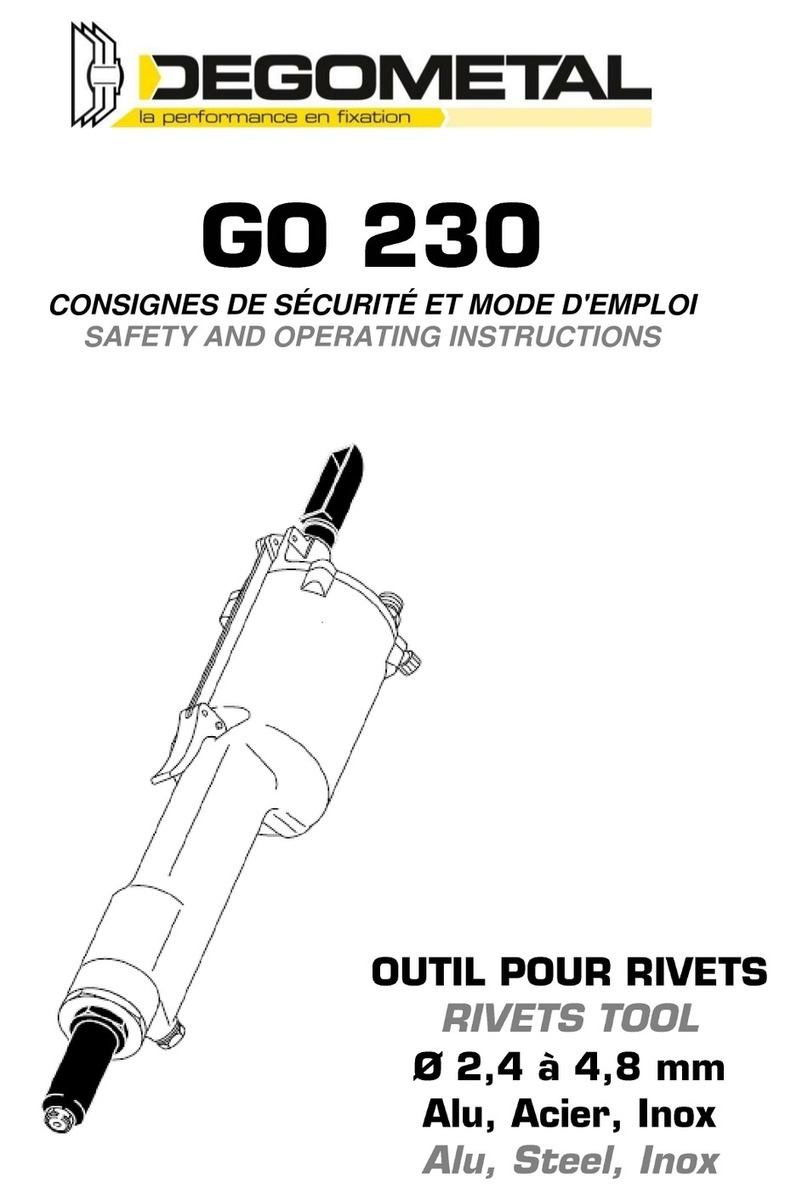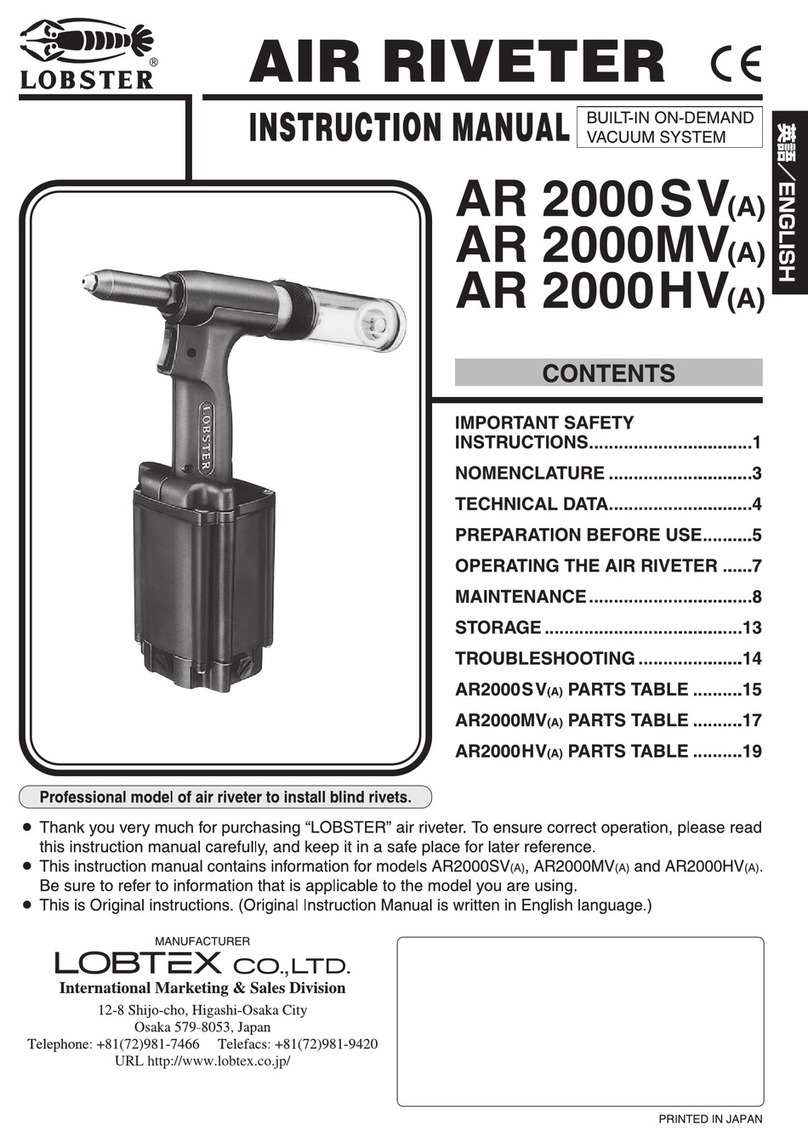Fixi 02RBZ User manual

PA
G
G
3-9 ITALIA
L
0
M
R
I
BA
T
NO
L
eggere atte
Conser
v
Rea
d
K
SE
0
2RBZ
M
ANUA
L
US
E
I
VETTA
T
T
TERY P
O
ntamente tu
t
v
are questo
m
d
All Safety
R
K
eep this m
a
DE CENT
R
Via
1014
6
Tel. +
3
Fax +
3
www.f
i
L
E DI IS
T
E
R MAN
U
T
RICI
A
O
WERE
D
t
te le norme
m
anuale pe
r
R
ules and In
s
a
nual for Fut
u
R
ALE / HE
A
Bellardi,
4
6
Torino -
(
3
9 011 70.
7
3
9 011
70.
7
i
xi.it - inf
o
T
RUZIO
N
U
AL
BATTE
R
D
RIVET
E
di sicurezza
r
future cons
s
tructions C
a
u
re Referen
c
A
DQUART
E
4
0/A
(
Italy)
7
2.398
7
2.521
o
@fixi.it
N
I
R
IA
ER
S
PA
G
e le istruzio
ultazioni.
a
refull
y
c
e
E
R:
02RB
G
. 10-16 EN
G
ni
ZPLUS
G
LISH

2
Via Bellardi, 40/A - 10146 TORINO (ITALY)
Tel. +39 011.7072398 - Tel. +39 011.7070877
Fax +39 011.7072521
E-mail: [email protected]
Via Valgioie, 94 - 10146 TORINO (ITALY)
Tel. +39 011.0882009
Fax +39 011.0882012
E-mail: [email protected]
Via Keplero, n. 4 G/H - Z.I. di TOGNANA - 35028 Piove di Sacco (PD) (ITALY)
Tel. +39 049.8079285
Fax +39 049.8087725
E-mail: [email protected]
Via Secci, n. 4 - 40132 BOLOGNA (ITALY)
Tel. +39 051.0353243
Fax +39 051.0353244
E-mail: [email protected]
Via Roma, n. 10 – 63078 Fr. Pagliare del Tronto Spinetoli (AP) (ITALY)
Tel. +39 0736.814110
Fax +39 0736.984002
E-mail: [email protected]
Via Arno, n. 50 - 63082 Castel di Lama (AP) (ITALY)
Tel. +39 0736.812922
Fax +39 0736.812922
E-mail: [email protected]

3
MISURE DI SICUREZZA
Si raccomanda di leggere attentamente le seguenti direttive di sicurezza prima di
utilizzare la rivettatrice o di eseguire operazioni di manutenzione.
-
Mai smontare la rivettatrice senza prima aver studiato attentamente e messo in atto
le istruzioni contenute in questo manuale.
-
Usare sempre la rivettatrice rispettando le norme di sicurezza contenute in questo
manuale. Rivolgere qualsiasi domanda riguardante l’utilizzo ottimale e sicuro della
rivettatrice alla nostra azienda (e-mail: [email protected], tel: +39 011.7072398)
-
Le istruzioni di sicurezza devono essere seguite da tutte le persone coinvolte
nell’utilizzo della rivettatrice.
-
La rivettatrice deve essere utilizzata solo per tirare rivetti a strappo.
-
La rivettatrice deve essere mantenuta in buono stato d’uso. Per controllarne il
corretto funzionamento, deve essere revisionata ad intervalli regolari
esclusivamente da personale specializzato. Non smontare la rivettatrice senza
previa lettura di questo manuale.
-
Non indirizzare la rivettatrice verso se stessi o altre persone.
Sicurezza del posto di lavoro
a) Conservare lo spazio di lavoro in condizioni di pulizia e illuminazione ottimali.
b) Non utilizzare questa rivettatrice in un ambiente a rischio di esplosioni e/o che
contenga liquidi, gas o polveri infiammabili.
c) Tenere lontani i bambini e altre persone mentre si usa questa rivettatrice.
Sicurezza della batteria
Non esporre a pioggia o umidità le rivettatrici a batteria. Eventuali infiltrazioni d’acqua
comporterebbero il rischio di scosse elettriche per l’operatore.
Sicurezza delle persone
a) Non usare questa rivettatrice se si è particolarmente stanchi o sotto l’effetto di alcool,
droghe o farmaci. Una momentanea disattenzione durante l'utilizzo può causare
lesioni gravi.
b) Indossare sempre indumenti e occhiali protettivi. Non indossare abiti ampi o gioielli.
Evitare di avvicinare capelli, vestiti e guanti alle parti mobili della rivettatrice.
c) Rimuovere gli strumenti di regolazione e i cacciaviti prima di accendere la rivettatrice
a batteria. Uno strumento o un cacciavite inserito in una parte rotante della
rivetttatrice può causare lesioni.
d) Assumere una posizione stabile e in equilibrio durante l’utilizzo della rivettatrice. In
questo modo è possibile controllarla meglio.
e) Accertarsi, prima dell’utilizzo della rivettatrice, che il dispositivo di raccolta dei
mandrini sia collegato e utilizzato correttamente.
Funzionamento e movimentazione
-
Non sovraccaricare la rivettatrice. Usare la rivettatrice solo per gli scopi indicati in

4
questo manuale, solo a queste condizioni si può lavorare in maniera ottimale e in
sicurezza.
-
Se l’interruttore di accensione risultasse difettoso non utilizzare la rivettatrice. Una
rivettatrice che non può essere accesa e/o spenta è pericolosa e deve essere
riparata.
-
Rimuovere sempre la batteria nei seguenti casi: prima di regolare la rivettatrice; prima
di sostituire dei pezzi; per trasportare la rivettatrice. Questa precauzione di sicurezza
ne impedisce l'avvio involontario.
-
Conservare le rivettatrici fuori dalla portata dei bambini.
-
Prestare attenzione alla manutenzione delle rivettatrici.
Controllare se le parti mobili funzionano perfettamente e non si inceppano. Verificare
la presenza di parti rotte o danneggiate che potrebbero influenzare il funzionamento
della rivettatrice. Riparare le parti danneggiate prima di utilizzare la rivettatrice. Molti
incidenti con le rivettatrici derivano da una scorretta manutenzione.
Uso e gestione degli strumenti a batteria
-
Utilizzare solo batterie originali e ricaricarle solo con dispositivi approvati dal
produttore per evitare rischi di incendio e lesioni.
-
Quando la batteria non viene utilizzata, tenerla lontana da graffette, monete, chiavi,
chiodi, viti e altri piccoli oggetti metallici che potrebbero causare un cortocircuito, e
quindi ustioni o incendi.
-
Nel caso di fuoriuscita di liquidi dalla batteria evitare il contatto. In caso di contatto
accidentale sciacquare la zona con acqua. Se il liquido della batteria viene a contatto
con gli occhi, chiamare un medico. Il liquido delle batterie può causare ustioni e
irritazione della pelle.
Manutenzione
Solo il personale qualificato è autorizzato a effettuare operazioni di manutenzione sulla
rivettatrice a batteria. Utilizzare solo ricambi originali.
Consigli di sicurezza per macchine rivettatrici a batteria
-
Tenere con entrambe le mani saldamente la rivettatrice a batteria durante il
lavoro e mantenere una posizione stabile.
-
Se la rivettatrice si inceppa spegnerla e togliere subito la batteria.
-
Fissare il pezzo che deve essere rivettato. Il pezzo può essere tenuto in maniera
più salda utilizzando un dispositivo di bloccaggio o una morsa da banco.
-
Assicurarsi che l'interruttore sia in posizione "Off" prima di inserire una batteria.
Tenere le dita lontano dall'interruttore di alimentazione durante il trasporto.
Inserire la batteria quando la rivettatrice è accesa potrebbe causare incidenti.
-
Non aprire la batteria, per evitare il rischio di cortocircuito. Tenere la batteria
lontana da fonti di calore (ad es. radiazione solare permanente) e dal fuoco per
evitare esplosioni.
-
Se la batteria è danneggiata o utilizzata in modo inappropriato, potrebbero
fuoriuscire dei vapori. In questo caso prendere aria e chiedere l’intervento di un
medico in caso di disturbi. I vapori possono irritare le vie respiratorie.

5
-
Se la batteria è difettosa, potrebbe fuoriuscire del liquido e ricoprire gli oggetti
adiacenti. Controllare le parti interessate, pulirle o sostituirle, se necessario.
-
Utilizzare la batteria adatta al modello di rivettatrice indicato nel manuale, per
prevenirne un pericoloso sovraccarico.
ATTENZIONE: le operazioni di manutenzione e riparazione devono essere svolte
esclusivamente da personale specializzato.
CARATTERISTICHE DELLE RIVETTATRICI A BATTERIA
Le rivettatrici possono lavorare con rivetti a strappo di tutti i materiali con diametro
compreso fra 2,4 e 6,4 mm.
02RBZ 02RBZPLUS
Diametri rivetti 3.2, 4.0, 4.8 mm. 4.0, 4.8,6.4 mm.
Peso senza batteria 1,5 Kg 1,55 Kg
Corsa 22 mm. 26 mm.
Forza di installazione 10.000 N 20.000 N
-
Motore a 18V DC
-
Conforme al regolamento UE n. 2006/42/EC
Caratteristiche della batteria
-
Tensione nominale: 18.0 V
-
Capacità: Li-Ion 2,0 Ah (4 celle)
-
Peso: 2.0 Ah: 0,38 Kg
Dati su rumorosità e vibrazioni
-
Emissione di rumore: LPA = 78,8 dB
-
Incertezza: K = 3 dB
-
Il livello di rumore durante il funzionamento può superare 80 dB (A)
-
Utilizzare protezioni acustiche!
-
Vibrazioni: <2,5 m / s2
Dispositivo di ricarica
-
Tensione di ingresso: 100 - 240 V / 50 - 60 Hz
-
Tensione di uscita: 18,0 V
-
Corrente di uscita: max. 1,5 A
-
Tempo di ricarica: 2,0 Ah: <80 minuti
-
Peso: 0,37 kg
Peso totale (inclusa batteria 1x2,0 Ah, dispositivo di ricarica e imballaggio): 3,5 kg. Sono
disponibili adattatori di alimentazione internazionali (CE / ECM / UL / ETL / CB / SAA).

6
FUNZIONAMENTO
Componenti
La numerazione dei componenti nell’immagine si riferisce alle parti esterne più rilevanti
della rivettatrice.
A) Ugello
B) Testa
C) Raccoglitore di mandrini
D) Pulsante
E) Illuminazione dell'area di rivettatura
F) Batteria
G) Interruttore di blocco/sblocco della batteria
H) Led rosso
Carica della batteria
NB: la batteria è parzialmente carica alla consegna.
Per garantire la massima potenza della batteria, caricarla completamente con il
caricabatterie prima del primo utilizzo. Prestare attenzione all'indicatore di carica sul
dispositivo di ricarica. La batteria al litio può essere ricaricata in qualsiasi momento senza
influire sulla sua durata. L'interruzione del processo di ricarica non danneggia la batteria. La
batteria è dotata di un sistema di monitoraggio della temperatura che consente di caricarla
tra 0° e 45 ° C.
Rimozione della batteria
La batteria (F) è dotata di un meccanismo di blocco/sblocco (G). Finché la batteria rimane
all'interno della rivettatrice rimane nella posizione corretta grazie ad una molla. Per
rimuovere la batteria (F), premere il pulsante di blocco/sblocco (G) e rimuovere la batteria
dalla rivettatrice. Non usare la forza.
Inserimento della batteria
Inserire la batteria al litio originale. L'uso di altre batterie può causare lesioni e rischi di
incendio.
Spingere la batteria (F) dal basso nel supporto della rivettatrice, tenendo premuto il
pulsante di blocco/sblocco (G). Spingere completamente la batteria nel supporto fino a
bloccarla saldamente.
Cambiare l’ugello
Su ogni ugello (A) è marcato il diametro del rivetto da utilizzare. Tenere premuto
l'interruttore di alimentazione (D). Durante questa fase NON rilasciare l’interruttore.
Utilizzare la chiave inglese SW 12, inclusa nella confezione, per montare l’ugello
necessario. Una volta avvitato l’ugello idoneo rilasciare l'interruttore di alimentazione (D).
Rivettatura
Inserire il rivetto nell’ugello (A) e l'altra estremità del rivetto nel pezzo da rivettare. Premere
l'interruttore di alimentazione (D) fino ad applicare il rivetto, quindi rilasciare l'interruttore di
alimentazione. Inclinare la rivettatrice all'indietro in modo che il mandrino del rivetto rimosso
cada nel dispositivo di raccolta del mandrino (C). Se il rivetto non si stacca in un'unica
operazione, ripetere la procedura.
Eventuali problematiche
Se vengono utilizzati rivetti troppo duri o se la batteria è scarica o sovraccarica, la
rivettatrice smette di funzionare e il LED rosso (H) si accende. Attendere fino a quando il
LED rosso (H) si spegne e premere l'interruttore di alimentazione (D) per un breve periodo.
Se la batteria è scarica, la rivettatrice viene spenta da un circuito di protezione e la
rivettatrice non si muove più.

7
Se si preme di nuovo l'interruttore di alimentazione dopo che la rivettatrice è stata spenta
automaticamente si potrebbe danneggiare la batteria.
Gestione ottimale della batteria
Tenere la batteria lontana da umidità e acqua. Conservare la batteria a temperature
comprese tra 0 ° e 45 ° C. Non lasciare la batteria nell'auto, ad es. in estate. Se la batteria
dopo una ricarica funziona per poco tempo è esaurita e deve essere sostituita.
Si prega di considerare le istruzioni per lo smaltimento indicate dal proprio Paese e
agire in maniera ecoresponsabile.
Manutenzione e assistenza
Togliere la batteria dalla rivettatrice durante il trasporto e lo stoccaggio.
Mantenere la rivettatrice e le fessure di ventilazione pulite per garantire un funzionamento
corretto e sicuro.
Se la rivettatrice a batteria dovesse comunque guastarsi nonostante le meticolose
procedure di controllo della produzione e della qualità, le riparazioni dovranno essere
eseguite da un centro di assistenza autorizzato.
Si prega di indicare il numero di serie indicato sulla targhetta della rivettatrice ogni volta che
ci si rivolge al servizio clienti o si ordinano dei pezzi di ricambio.
Sostituzione dei morsetti
I morsetti sono parti soggette ad usura. Se non si riesce a rivettare in un singolo ciclo di
lavoro si devono cambiare le ganasce di serraggio:
III. Svitare la testa (1) della rivettatrice (3). Estrarre dalla testa (1) il porta morsetti (2) e i
morsetti (4). Sostituire i morsetti nel caso in cui siano consumati. Inserire i morsetti nuovi
nel portamorsetti. Inserire il porta morsetti nella testa.
IV. Avvitare la testa (1) sulla rivettatrice.
(1) Testa
(2) Porta morsetti
(3) Rivettatrice
(4) Morsetti (3 pezzi)

8
PARTI DI RICAMBIO
ITEM
PART NO.
DESCRIPTION
QTY
Remarks
1
3 5000 001
02RBZ left housing
1
02RBZ
2
3 6000 001
02RBZPLUS left housing
1
02RBZPLUS
3
3 5000 002
switch trigger
1
02RBZ/02RBZPLUS
4
5 5000 001
spring
1
02RBZ/02RBZPLUS
5
1 5000 001
02RBZ pcb
1
02RBZ
6
1 6000 001
02RBZPLUS pcb
1
02RBZPLUS
7
3 5000 003
tapping screw
2
02RBZ/02RBZPLUS
8
1 5000 002
02RBZ core
1
02RBZ
9
1 6000 002
02RBZPLUS core
1
02RBZPLUS
10
3 5000 004
tail tube
1
02RBZ/02RBZPLUS
11
2 5000 001
collector
1
02RBZ/02RBZPLUS
12
3 5000 005
02RBZ right housing
1
02RBZ
13
3 6000 002
02RBZPLUS right housing
1
02RBZPLUS
14
3 5000 006
hook
1
02RBZ/02RBZPLUS
15
2 5000 002
02RBZ motor assembly
1
02RBZ
16
2 6000 001
02RBZPLUS motor assembly
1
02RBZPLUS
17
3 5000 007
clip
1
02RBZ/02RBZPLUS
18
5 5000 002
tapping screw
2
02RBZ/02RBZPLUS
19
5 5000 003
tapping screw
8
02RBZ/02RBZPLUS
20
1 5000 020
02RBZ battery pack
1
02RBZ
21
1 6000 021
02RBZPLUS battery pack
1
02RBZPLUS
22
1 5000 003
charger
1
02RBZ/02RBZPLUS
23
5 5000 023
magnet holder
1
02RBZ/02RBZPLUS
24
5 5000 004
screw with washer
2
02RBZ/02RBZPLUS
25
1 5000 025
02RBZ Core(non-removable)
1
02RBZ
26
1 6000 003
02RBZPLUS Core(non-removable)
1
02RBZPLUS
27
1 5000 004
pa ring
1
02RBZ/02RBZPLUS
28
5 5000 028
spring
1
02RBZ/02RBZPLUS
29
1 5000 005
jaw’s spreader
1
02RBZ/02RBZPLUS
30
1 5000 006
jaw
3
02RBZ/02RBZPLUS
31
1 5000 007
jaw’s front sleeve
1
02RBZ/02RBZPLUS
32
5 5000 032
O ring
1
02RBZ/02RBZPLUS
33
1 5000 008
nose casing
1
02RBZ/02RBZPLUS
34
1 5000 009
nosepiece 2.4
1
02RBZ
35
1 5000 035
nosepiece 3.2
1
02RBZ
36
1 5000 010
nosepiece 4.0
1
02RBZ/02RBZPLUS
37
1 6000 004
nosepiece 4.8
1
02RBZPLUS
38
1 6000 005
nosepiece 6.4
1
02RBZPLUS

9

10
SAFETY INSTRUCTIONS
It is strongly recommended to carefully read and pay close attention to the following safety
directions before using the tool or performing maintenance.
-
Never dismantle the tool without first having thoroughly studied the instructions given
in this User Manual and applying them.
-
Always use the tool in accordance with the specified safety instructions. Direct any
queries regarding optimal and safe operation or use of the tool to our company (e-
mail: [email protected], tel. +39 011.7072398)
-
The safety instructions must be followed by any person handling or operating the
tool.
-
The tool must be used for setting Breakstem Rivets only.
-
The tool must be kept in a safe working condition at all times and inspected at
regular intervals to check the correct function by skilled personnel only. Do not
dismantle this tool without reading the user manual and maintenance instructions.
-
Never aim the tool towards yourself or other persons.
Workspace safety
a. Keep your work space in a clean condition and provide sufficient lighting.
b. Do not operate this tool in an environment with risk of explosions which contains
flammable liquids, gases or dust.
c. Keep children and other persons away while operating this tool.
Battery safety
Do not expose battery operated riveting tools to rain or humidity. Water entering a battery
operated riveting tool increases the risk of electric shock.
People safety
a. Stay alert, be careful with your actions and use this tool in a reasonable way. Do
not use this tool if you are tired or under the influence of alcohol, drugs or
medication. A momentary carelessness while using this tool can lead to serious
injuries.
b. Always Wear appropriate clothing and protective goggles. Do not wear oversized
clothing or jewelry. Avoid that hair, clothing and gloves get close to the moving
parts of the device.
c. Remove adjusting tools and screwdrivers before switching on the battery riveting
tool. A tool or screwdriver placed into a rotating part of the device can lead to
injuries.
d. Avoid unnatural body positions. Ensure you are standing firmly and always
preserve your balance. This way you can better control the battery riveting tool.
e. Before using the tool, make sure that the mandrel collecting device is connected
and used correctly.

11
Operation and handling of this riveting tool
a. Do not overload the tool. Use the tool only for the purpose indicated in this manual in
order to work safely and optimally.
b. Do not use a riveting tool that has a defective power switch. A riveting tool which
cannot be turned on and off any more is dangerous and has to be repaired.
c. Always remove the battery in the following cases: before making adjustments to the
device, before changing accessories or before its transportation or storage. This
safety precaution prevents the inadvertent start of this tool.
d. Store unused riveting tools out of the reach of children.
e. Pay attention to the maintenance of this riveting tool. Check that moving parts are
functioning flawlessly and do not jam. Check for broken and damaged parts that could
influence the operation of this riveting tool. Repair the damaged parts before using the
device. Many accidents with the riveting tools stem from maintenance failures.
Use and handling of the battery tools
-
Only use and recharge original batteries in charging devices approved by the
manufacturer to avoid risks of fire and injuries.
-
When not using the battery, keep it away from paper clips, coins, keys, nails, screws
and other small metallic objects which may cause short – circuits and lead to burns
or fire.
-
Avoid contact with the fluid that may emerge from the battery when used incorrectly.
In case of accidental contact with the body, rinse the area with water. If the battery
fluid comes in contact with the eyes, additionally call for medical help. Emerging
battery fluid can lead to burns and irritation of the skin.
Service
Only let qualified personnel repair your battery riveting tool. Use only original spare parts.
Safety advice for battery riveting tools
-
Hold the battery riveting tool firmly with both hands when working and keep it in a
steady position.
-
Immediately turn off the battery riveting tool if the riveting t o ol j a m s .
-
Hold the battery riveting tool tightly. Secure the work-piece that is to be riveted. A work-
piece is held more securely by a clamping device or a bench vise.
-
Make sure that the power switch is turned to the "Off" position before inserting a
battery. Keep fingers away from the power switch while carrying the tool. Inserting the
battery while the tool is switched on may lead to accidents.
-
Do not open the battery, as this leads to the risk of a short-circuit. Keep the battery
away from heat (e.g. permanent solar radiation) and from fire due to risk of
explosion.

12
-
If the battery is damaged or used in an inappropriate manner, vapors may emerge
from it. Get some fresh air and call for medical help in case of complaints. The
vapors can lead to irritation of the respiratory tracts.
-
If the battery is defective, fluid may emerge from it and coat adjacent objects. Check the
parts affected, clean them or replace them if necessary.
-
Use the battery only with this battery riveting tool. This is the only way to prevent
dangerous overload of the battery.
WARNING: all the maintenance and repairing procedures must be carried out only by
skilled personnel.
Technical features of the Battery - powered riveting tool
Suitable for setting blind rivets with diameters from 2.4 to 6.4 mm, in all materials.
02RBZ 02RBZPLUS
Rivets diameters 3.2, 4.0, 4.8 mm. 4.0, 4.8,6.4 mm.
Weight without battery 1,5 Kg 1,55 Kg
Stroke 22 mm. 26 mm.
Installation force 10.000 N 20.0
● Drive: 18.0 V DC
● according to EU Directive No. 2006/42/EC
Battery features
● Nominal voltage: 18.0 V
● Capacity: Li-Ion 2.0 Ah (4 cells)
● Weight: 2.0 Ah: 0.38 kg
Data on noise and vibrations
● Noise emission: LPA= 78,8dB
● Uncertainty: K = 3 dB
● The noise level during operation can exceed 80 dB(A)
● Use ear protectors!
● Vibrations: <2.5 m/s2
Charging device
● Input voltage: 100 - 240 V / 50 - 60 Hz
● Output voltage: 18.0 V
● Output current: max. 1.5 A
● Recharging time:2.0 Ah: <80 minutes
● Weight: 0.37 kg
Total weight (including 1x2.0 Ah battery, charging device and packaging): 3.5 kg. Power
plug adaptors for worldwide use are available (CE/ECM/UL/ETL/CB/SAA)

13
OPERATIONAL DESCRIPTION
Components
The numbering of the components in the picture refers to the main exterior parts of
the battery riveting tool.
A) Nosepiece
B) Nose casing
C) Mandrel collector
D) Trigger
E) Riveting area illumination
F) Battery
G) Battery locking/unlocking switch
H) Red led
Charging the battery
Note: The battery is partially charged on delivery.
To guarantee full power of the battery, charge it completely in the charger before
first use. Pay attention to the charge indicator on the charging device. The Li - Ion
battery can be recharged at any time without affecting its fatigue life. Interrupting the
charging process doesn't damage the battery. The battery is equipped with a temperature
monitoring system which only allows for charging between 0°C and 45°C.
Removing the battery
The battery (F) is equipped with a locking/unlocking mechanism (G). As long as the
battery remains inside the tool it is held in position by a spring. To remove the battery (F),
press the locking/unlocking button (G) and pull the battery from the riveting device. Don't
use force.
Inserting the battery
Only use original Li-Ion batteries. The use of other batteries may lead to injuries and risk of fire.
Push the battery (F) from under into the stand of the riveting tool, holding the locking button
(G) pressed. Push the battery into the stand completely until it is securely locked.
Changing nose pieces
The nose piece (A) is marked with numbers corresponding to the rivet diameters. Hold the
power switch (D) pressed during this procedure. Use the included wrench SW 12 to switch
to the required nose piece. After screwing the right nose piece completely, release the
power switch (D).
Riveting
Insert the rivet into the nose piece (A) and the other end of the rivet into the work - pieces
to be riveted. Press the power switch until the rivet is set, then release the power switch.
Tilt the riveting device backwards so that the removed rivet mandrel falls into the mandrel
collection device (C). If the rivet doesn't come off in a single working stroke, repeat the
procedure.

14
Possible failures
If the rivets are too hard for the tool or if the battery is low or overcharged, the device will
stop operating and the red LED (H) will light up. Wait until the red LED (H) turns off and
press the power switch (D) for a short time.
If the battery is low, the device is powered down by a protective circuit and the
working tool will not move any more.
Do not press the power switch again after the riveting tool has been powered down
automatically, this may lead to battery damage.
Advise on optimal handling of the battery
Keep the battery away from humidity and water. Only store the battery at temperatures
from 0° to 45°C. Do not leave the battery in the car, e.g. in summer. If the battery is
working for significantly shorter periods of time after a recharge, it is used up and needs to
be replaced.
Please consider the instructions for disposal indicated in your country and act in an
environmentally-responsible manner.
Maintenance and service
Remove the battery from the riveting tool for transportation and storage. Keep the riveting
tool and the ventilation slots clean to ensure good and safe operation.
If the battery riveting tool should fail despite the meticulous manufacturing and quality
control procedures, the repairs should be done by an authorized service center for the
battery riveting devices.
Please quote the serial number indicated on the label of the battery riveting tool whenever
turning to customer service or ordering spare parts.
Changing the clamping jaws
The clamping jaws are wearing parts. If you are unable to rivet in a single working stroke
you should change the clamping jaws:
(1) Nose casing
(2) Jaw holder
(3) Rivet tool
(4) Clamping jaws set
(3 pcs)
III. Unscrew the rivet tool (3) nose casing (1).
Remove the nose casing (1), the jaw holder (2)
and the jaws (4). Replace the jaws when they are
worn out. Insert the new jaws in the jaw holder.
Insert the jaw holder in the nose casing.
IV. Screw the nose casing back on the rivet tool (3)

15
SPARE PARTS LIST
ITEM
PART NO.
DESCRIPTION
QTY
Remarks
1
3 5000 001
02RBZ left housing
1
02RBZ
2
3 6000 001
02RBZPLUS left housing
1
02RBZPLUS
3
3 5000 002
switch trigger
1
02RBZ/02RBZPLUS
4
5 5000 001
spring
1
02RBZ/02RBZPLUS
5
1 5000 001
02RBZ pcb
1
02RBZ
6
1 6000 001
02RBZPLUS pcb
1
02RBZPLUS
7
3 5000 003
tapping screw
2
02RBZ/02RBZPLUS
8
1 5000 002
02RBZ core
1
02RBZ
9
1 6000 002
02RBZPLUS core
1
02RBZPLUS
10
3 5000 004
tail tube
1
02RBZ/02RBZPLUS
11
2 5000 001
collector
1
02RBZ/02RBZPLUS
12
3 5000 005
02RBZ right housing
1
02RBZ
13
3 6000 002
02RBZPLUS right housing
1
02RBZPLUS
14
3 5000 006
hook
1
02RBZ/02RBZPLUS
15
2 5000 002
02RBZ motor assembly
1
02RBZ
16
2 6000 001
02RBZPLUS motor assembly
1
02RBZPLUS
17
3 5000 007
clip
1
02RBZ/02RBZPLUS
18
5 5000 002
tapping screw
2
02RBZ/02RBZPLUS
19
5 5000 003
tapping screw
8
02RBZ/02RBZPLUS
20
1 5000 020
02RBZ battery pack
1
02RBZ
21
1 6000 021
02RBZPLUS battery pack
1
02RBZPLUS
22
1 5000 003
charger
1
02RBZ/02RBZPLUS
23
5 5000 023
magnet holder
1
02RBZ/02RBZPLUS
24
5 5000 004
screw with washer
2
02RBZ/02RBZPLUS
25
1 5000 025
02RBZ Core(non-removable)
1
02RBZ
26
1 6000 003
02RBZPLUS Core(non-removable)
1
02RBZPLUS
27
1 5000 004
pa ring
1
02RBZ/02RBZPLUS
28
5 5000 028
spring
1
02RBZ/02RBZPLUS
29
1 5000 005
jaw’s spreader
1
02RBZ/02RBZPLUS
30
1 5000 006
jaw
3
02RBZ/02RBZPLUS
31
1 5000 007
jaw’s front sleeve
1
02RBZ/02RBZPLUS
32
5 5000 032
O ring
1
02RBZ/02RBZPLUS
33
1 5000 008
nose casing
1
02RBZ/02RBZPLUS
34
1 5000 009
nosepiece 2.4
1
02RBZ
35
1 5000 035
nosepiece 3.2
1
02RBZ
36
1 5000 010
nosepiece 4.0
1
02RBZ/02RBZPLUS
37
1 6000 004
nosepiece 4.8
1
02RBZPLUS
38
1 6000 005
nosepiece 6.4
1
02RBZPLUS

16
Other manuals for 02RBZ
1
This manual suits for next models
1
Table of contents
Languages:
Other Fixi Rivet Tools manuals
